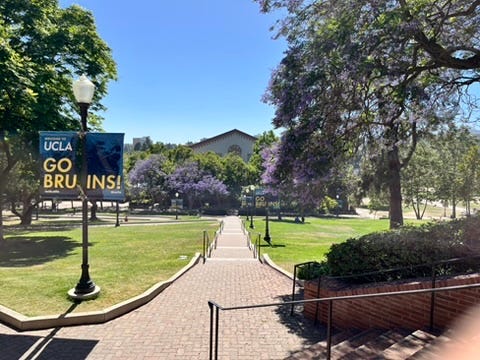In working with companies, I run across a lot of sales leaders who are surprised to learn that there are professors (like me) who research sales organizations and salespeople.
Despite my efforts to grow awareness, I understand where they’re coming from. The reality is that active sales researchers in academia are a rare breed. Compared to marketing, which encompasses thousands of professors, sales research (a subfield of marketing) comprises fewer than 100 active researchers worldwide1. This shortage stems partly from the negative stereotypes that pervade the sales profession (see previous post), but also from the limited number of sales-focused PhD institutions and academic posts.
It feels highly irrational to omit sales from academia and business schools. Salespeople make up one of the most prevalent work roles in the U.S. economy (10% of the entire labor force; 15 million people)2. On top of that, sales force costs often account for one of the largest expenses inside an organization. U.S. firms spend more than $800 billion to manage their sales forces, with $200 billion devoted solely to compensation3.
To help with this situation, the Thought Leadership on the Sales Profession Conference was formed. The conference offers a unique opportunity for sales researchers and practitioners to network, exchange ideas, and align their interests on the most important priorities for sales organizations. The most recent conference (held every 2 years) took place at UCLA and offered a great array of senior sales leaders’ insights and scholarly sales research talks.
If you’ve been to sales kickoffs or sales academic conferences, this is NOT one of those.
Unlike most conferences, here sales researchers present their work through TED-style talks aimed at highlighting the importance and implications of research work, rather than bogging down in the details of hypotheses and methods. Following each talk, a panel of senior sales leaders and academics discusses the relevance and connections between the research and their own perspectives.
The conference also plays host to several industry keynotes and panels focused on insider perspectives and challenges transforming the sales field. This year, artificial intelligence, strategic account management, and incentive management topped the list of the most prevalent industry-led topics.
Every time I attend this conference, I come away with a renewed appreciation of our field. A lot of sales leaders scoff at attending a sales research conference. So, when I listen to a large number of thoughtful, reflective, and open-minded sales leaders who want to learn about sales research and collaborate on future studies, it is refreshing.
One highlight of the conference came from Arun Shastri, a senior partner at ZS Associates. Arun is a regular contributor to HBR on the evolving nature of the sales profession. Two points that stuck with me from his talk that are worth sharing:
Field sales is not going away, but it IS changing.
Organizations will continue to grapple with labor arbitrage (i.e., when, where, and how a costly salesperson is best to use for customer interactions). You can expect continual reorganizations to align in-person, virtual, and digital channels for go-to-market (GTM) efforts. Some of the GTM changes will be product-led (e.g., introduction of self-service offerings that are easy to use) while others will be aimed at adding value to the interaction (e.g., in-person salesperson for building trust in hard-to-automate, risky, complex interactions). You can also expect salespeople will need to be more data-savvy as new digital assistants can draw out analytical insights with the right queries. But the biggest bottleneck here is typically the lack of data management sophistication. A lot of organizations are not agile or integrated enough to aggregate data across the firm.
A new perspective on early-career sales competencies is needed
Over the past two decades, many industries saw a big shift towards specialized sales roles. Many entry-level roles (e.g., SDRs, BDRs) became highly focused on top-of-funnel activities. But the value of this role being performed by a human is quickly decreasing as technology is beginning to offer cheaper replacement options (e.g., chatbots, AI agents). As a result, there is a marked shift to needing more generalist salespeople (e.g., AEs) who can support full-cycle buyer journeys and bring alignment across multiple functions and perspectives. This is an imposing challenge for entry-level onboarding that was traditionally focused on early-buying-stage sales motions. There’s an increasing emphasis on strategic selling on the horizon, which I’ll have more to say about in a future post.
All told, it was a fruitful conference. I was able to present my own research on new hire compensation offers, which I’ll do a deep dive on very soon. The feedback for me was helpful and offered some new directions to consider that could strengthen how impactful the work becomes. Can’t ask for more than that!
The community building around sales research and practice is strong and offers a lot if you’re interested in diving in. There are some REALLY outstanding sales leaders helping grow organizations in innovative ways. And I’m encouraged by all the interesting topics being studied across the world.
If you cannot tell by the pictures, UCLA’s campus is absolutely stunning. I took several walks and a run around campus (which is large), so you should definitely visit if you get the chance.
Scholar GPS Sales Academics https://scholargps.com/top-scholars?ranking_duration=LAST_5_YEARS&specialty=Sales&p=1&e_ref=13cbbe4bbfdaa3d76520#8
U.S. Department of Labor, Bureau of Labor Statistics (2018), National Occupational Employment and Wage Estimates, May.
Zoltners, A. A., Sinha, P., & Lorimer, S. E. (2013). Are you paying enough attention to your sales force?. HBR Blog Network (blog), Harvard Business Review.Chicago









Such a great moment to get a pulse of the field. Great synopsis Ryan!